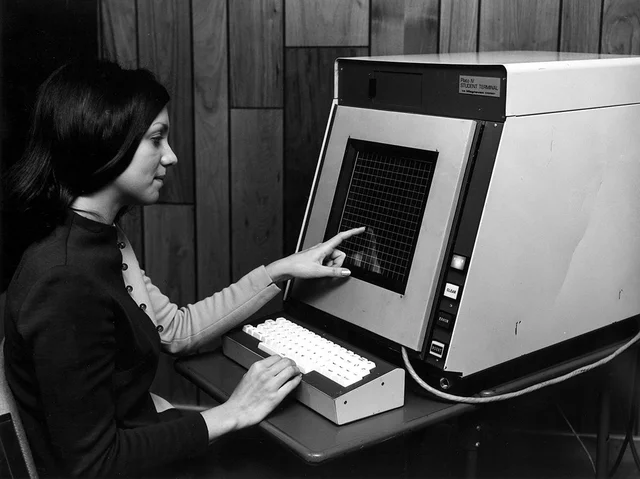-
 Computers were needed and different campus started having access to this type of new technology.
Computers were needed and different campus started having access to this type of new technology. -
 The PLATO project (Programmed Logic for Automatic Teaching Operations) distributed computer-based learning system that was created at the University of Illinois.After its inception in 1959, PLATO systems were put in place across the world.
The PLATO project (Programmed Logic for Automatic Teaching Operations) distributed computer-based learning system that was created at the University of Illinois.After its inception in 1959, PLATO systems were put in place across the world. -
This project started on 1971 at Brigham Young University.
This program combine computer with television technology. This program had the capacity to combine audio, text and video. -
project that by 1980 had courseware for language study
in ESL, French, German, Spanish, and Italian
(Chapelle, 2001). -
These early applications of computers to education were mostly demonstrations to show the potential of computers in education. Researchers extended Skinner's work and used sophisticated mathematical models of student learning to help design instructional materials and strategies to achieve a level of individualization.
-
Through the purposeful use of technology: Students read, listen to, and view authentic, engaging, and timely materials from the target culture. Students practice interpersonal skills as they interact via video, audio, or text in real-time with other speakers of the target language.